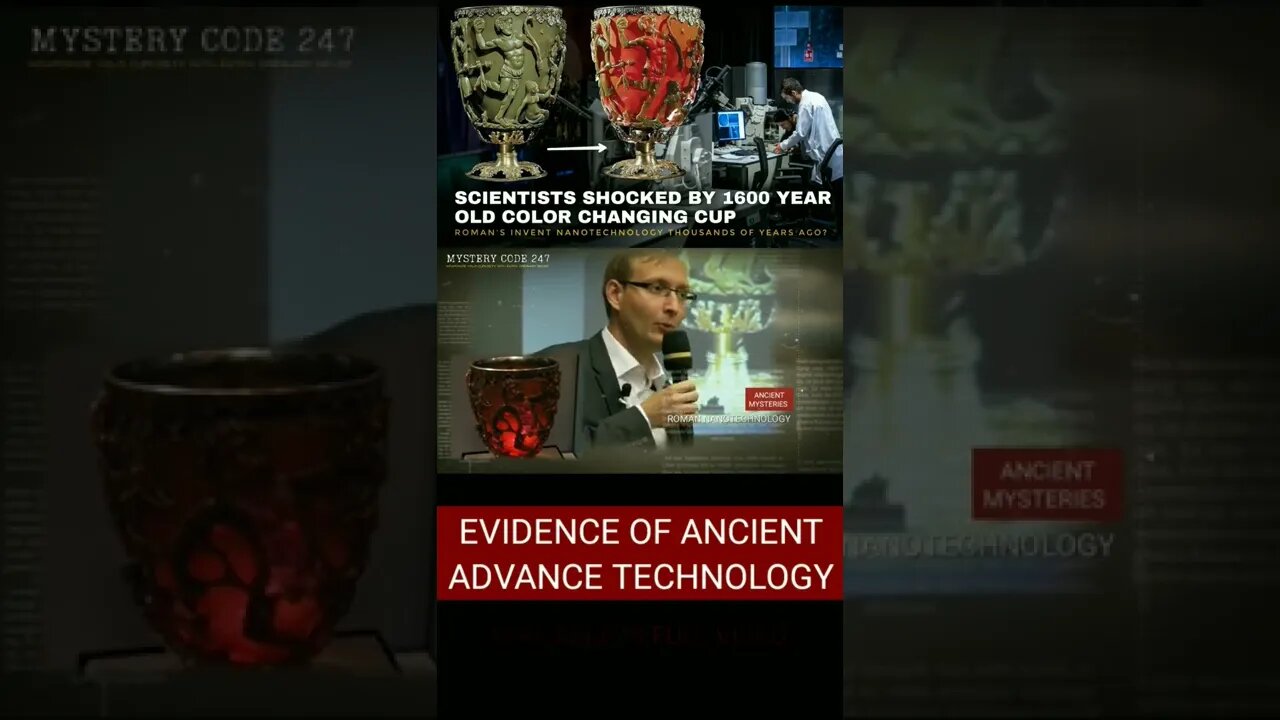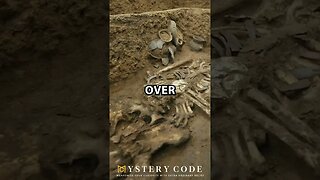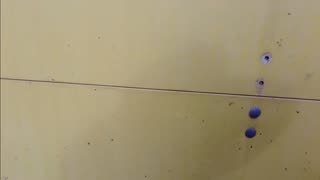Premium Only Content

1600 Years Old Color Changing Cup |Advance Technology
It's interesting that no one knows why the Lycurgus Cup was designed to change color when lighted. Was there a ritual involved? Was it a ruler's tool for detecting poison? Was it only to exhibit light and color so exquisitely?
Engineer Gang Logan Liu from the University of Illinois at Urbana-Champaign believes there is a benefit to investigating this object and its technology. He has been concentrating on how to diagnose and treat diseases using nanotechnology. Liu claims that the Romans were skilled in creating and utilizing nanoparticles for exquisite art. We were interested in exploring any potential scientific uses for this. Liu postulated that when a treated vessel was filled with various liquids, the vibrating electrons would change the color of the glass accordingly. The Lycurgus Cup couldn't be used in the experiment for fear of damage. Instead, the researchers
"...created an array of billions of incredibly small Lycurgus Cups by imprinting countless tiny wells onto a plastic plate the size of a postage stamp and dousing them with gold or silver nanoparticles. The wells showed a variety of easily distinguishable colors when water, oil, sugar solutions, and salt solutions were put into them, such as light green for water and red for oil. The prototype's sensitivity to changed salt levels in solution was 100 times greater than that of comparable commercial sensors now on the market.
Therefore, a technology created 1,600 years ago has the potential to be used today. It raises the question of what nanotechnology actually is. Is this science insanity? A revolution in atomic engineering? the two?
In essence, nanotechnology involves controlling systems and processes at the atomic scale—a world so tiny that it is beyond the comprehension of non-scientists. The word "nanotechnology" is a Greek word that means "dwarf." What kind of scale are we referring to? "A nanometre is a very small unit of measurement that is one billionth (10-9) of a meter in length, or around 100,000th of the breadth of a human hair.
The last 20 years have seen a development in nanotechnology. A substantial effort is currently being made to develop applications for the research's continuous usage. Nanobots have the potential to locate and eliminate cancer cells. Modern surgical instruments, diagnostic methods, and medication delivery systems have the potential to change medicine. Nanotechnology has promise for antiterrorism programs since it can swiftly ascertain the make-up of unidentified liquids, chemicals, and substances to stop assaults.
-
 0:52
0:52
MindSet Code Ph
2 years ago $0.08 earnedThe ancient mysteries, Hidden Cave Under the Mountain
782 -
 40:15
40:15
NAG Daily
14 hours agoThe Rezendes Rundown Ep. 19 - Mad Bad Science
3.29K2 -
 31:57
31:57
Uncommon Sense In Current Times
17 hours ago $0.35 earnedThe DEI Housing Hoax | Dan Huff on Zoning, Manufactured Crisis & the War on Suburbs
10.4K1 -
 2:55
2:55
From Zero → Viral with AI
1 day ago $0.18 earnedAI Misconceptions: Why Small Businesses Hold the Real Advantage 🚀
3.08K -
 LIVE
LIVE
BEK TV
23 hours agoTrent Loos in the Morning - 9/25/2025
244 watching -
 2:39
2:39
The Official Steve Harvey
1 day ago $0.28 earnedThese books didn’t just change my mind, they changed my life. 📚💯
4.23K -
 1:35:35
1:35:35
Investigate Everything w/ Brian O'Shea
14 hours agoPart 1: "Evil & Logistics: Why is the Left So Good At Both” w/ Brian O’Shea & Bill Stebbins
8.1K1 -
 1:20:31
1:20:31
CharLee Simons presents DO NOT TALK
1 day agoR.I.P. MEDIA FREAKS
5.38K1 -
 16:39
16:39
Professor Nez
19 hours ago🚨PRICELESS: Trump Just EMBARRASSED Macron in New York
83.4K21 -
 25:51
25:51
DeVory Darkins
18 hours ago $6.91 earnedDemocrats ghosted and stunned by Trump as Routh attempts to off himself after guilty verdict
22.6K65